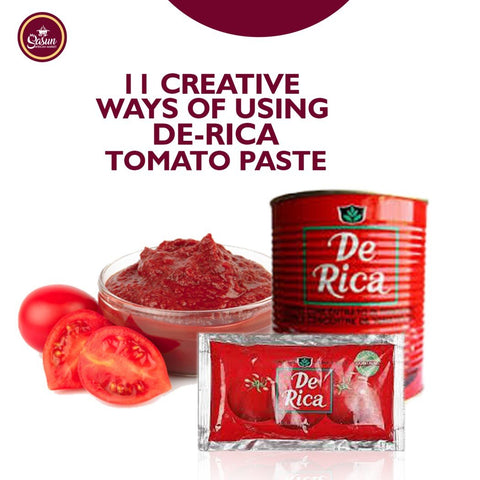Pap, also known as Akamu, is a traditional West African food made from fermented grains. It is a staple in many cultures, valued for its versatility and nutritional benefits. It's similar to porridge and can be made from various grains like corn, millet, or sorghum.

Also Read: 10 FERMENTED FOODS IN WEST AFRICA & THEIR HEALTH BENEFITS
Historical Background of Pap/Akamu
The origins of Pap/Akamu can be traced back to traditional African societies where it was a primary weaning food. Its preparation methods have been passed down through generations, reflecting the region's rich culinary history.
Nutritional Benefits of Pap/Akamu
Pap/Akamu is rich in carbohydrates, vitamins, and minerals. It contains essential nutrients such as magnesium, potassium, and selenium, making it a nutritious option for all ages. Pap/Akamu is particularly beneficial for nursing mothers and babies. It is believed to aid in breast milk production and provides a digestible food source for infants.
How is Pap/Akamu Eaten?
Pap/Akamu is commonly enjoyed warm for breakfast, often accompanied by bean cakes, moinmoin or bread. It serves as a comforting meal and is also used as a weaning food for babies due to its gentle nature on the stomach.
Also Read: TOP 14 WEST AFRICAN FOODS FOR GUT HEALTH AND DIGESTIVE WELLNESS
How to prepare Pap/Akamu from scratch
Here's a step-by-step guide on how to prepare pap/akamu:
- Selecting the Grains: Choose high-quality grains like millet, maize, or guinea corn. These grains are rich in nutrients and are easily digestible.
- Cleaning and Soaking: Clean the grains thoroughly to remove any dirt or impurities. Then, soak them in clean water for up to three days to allow fermentation. This process helps to break down complex carbohydrates and enhances their nutritional value.
- Wet Milling: Drain the water and grind the grains into a smooth paste after fermentation. You can use a traditional grinding machine or a modern blender.
- Sieving: Use a fine sieve or cheesecloth to separate the smooth paste from the chaff. The resulting liquid is the raw Pap mixture.
- Settling and Decanting: Allow the mixture to settle in a container. After some time, carefully decant the clear water on top, leaving the thick Pap sediment at the bottom.
- Cooking: To prepare Pap/Akamu, mix a small amount of the raw Pap with cool boiled water to form a smooth paste. Then, gradually add hot water while stirring continuously until you achieve a semi-liquid consistency suitable for you.
- Serving: The Pap should be warm but not hot. You can serve it plain or mix it sugar sand peak milk to enrich the taste and nutritional content.
Also Read: TWO BEST AND HEALTHIEST METHODS OF COOKING MOIN MOIN
Nutritious Baby Pap Recipe
Here’s a good way to make this nutritious food for your little baby/child:
Ingredients:
- 1 cup of Pap paste (Akamu, Ogi)
- 1 tablespoon of ground crayfish
- 1 tablespoon of ground roasted groundnuts (peanuts)
- Maple syrup or date puree to taste
- Water (as needed for consistency)
Instructions:
- Prepare the Pap: In a bowl, mix the Pap paste with a little room temperature water to form a smooth consistency without lumps.
- Add Additives: Stir in the ground crayfish and ground roasted groundnuts until well combined. These ingredients are rich in protein and essential nutrients beneficial for your baby's growth.
- Sweeten the Pap: Add maple syrup or date puree to the mixture for natural sweetness. Dates are a great source of energy and nutrients, while maple syrup provides a subtle, natural sweetness.
- Cook the Pap: Gradually add hot water to the mixture while stirring continuously. Adjust the amount of water to achieve a semi-liquid consistency that's suitable for your baby's weaning stage.
- Cool and Serve: Allow the Pap to cool down to a safe temperature before serving. Ensure it's warm but not hot to the touch to avoid burning your baby's mouth.
Note: Always consult with your pediatrician before introducing new foods to your baby's diet, especially when adding ingredients like groundnuts, which may be allergenic to some children. Additionally, ensure that all ingredients are finely ground to prevent any choking hazards.
Also Read: 6 DELICIOUSLY HEALTHY MEALS YOU CAN MAKE WITH BEANS
Different Types of Pap/Akamu
There are several variations of Pap/Akamu, depending on the grain used. White corn yields white Pap, while yellow corn, guinea corn, and millet produce yellow, maroon, and greyish Pap, respectively.
White Corn Pap
White corn pap is a good source of carbohydrates, providing energy to start your day. It contains essential vitamins such as Vitamin A, B5, B3, B1, riboflavin, and Vitamin C, along with minerals like folic acid, potassium, chromium, selenium, zinc, phosphorus, and magnesium. These nutrients contribute to various health benefits, including:
- Regulating Blood Pressure: Due to its high potassium and low sodium content, it's beneficial for people with high blood pressure.
- Lowering LDL Cholesterol: Contains minerals that help reduce 'bad' LDL cholesterol levels.
Yellow Corn Pap
Yellow corn pap shares similar nutritional properties to white corn pap, with the added benefit of antioxidants present in the yellow pigment of the corn. These antioxidants can help protect against certain diseases.
Guinea Corn (Sorghum) Pap
Guinea corn pap, made from sorghum, is rich in fiber and phenolic compounds, which are known to prevent heart diseases and metabolic disorders. It also provides:
- Essential Nutrients and Minerals: Rich in iron, B vitamins, magnesium, potassium, phosphorus, and calcium, which support metabolism, neural development, and bone health.
- Diabetes Prevention: Low starch digestibility and the presence of tannins help manage blood sugar levels.
Millet Pap
Millet pap is particularly beneficial due to its high protein, fiber, and antioxidant content. It's also gluten-free, making it suitable for those with celiac disease or gluten sensitivities. Millet provides:
- Blood Sugar and Cholesterol Control: Helps lower blood sugar and cholesterol levels.
- Rich Nutritional Profile: Offers a good amount of phosphorus, magnesium, folate, iron, and essential amino acids.

Potential Side Effects of Pap/Akamu
While Pap/Akamu is generally safe, excessive consumption can lead to digestive issues and may interfere with thyroid function due to certain compounds present in the grains.
Also Read: TOP 13 TRADITIONAL NIGERIAN BREAKFAST DISHES YOU NEED TO TRY
Other Helpful Tips
When purchasing Pap/Akamu, look for fresh, quality grains. Store it in a cool, dry place and consume it freshly prepared for the best taste and nutritional value.
Rounding Off
Pap/Akamu remains a cherished food item with deep cultural roots and nutritional benefits. Its simplicity and adaptability continue to make it a beloved choice in contemporary cuisines. Shop at My Sasun African Store for the best, freshest and richest akamu/pap in the United States or Canada.










Comments (13)
Powerful Herbal treatment is 100% guaranteed for HSV cure, the reason why most people are finding it difficult to cure HSV 1 or 2 is because they believe in medical reports, drugs and medical treatments which are not helpful to cure HSV and haven’t proved any sign of helping. Natural roots/herbs are the best remedy which can easily eradicate herpes forever. I never believed it until I was helped and cured of my 16 months genital herpes with natural herbal medicines from Dr Agbon. Where other medical prescribed drugs and treatments failed, Dr Agbon natural herbs helped save me from Genital herpes permanently and I’m so grateful for this. You can also get help from this great and powerful Herbalist Dr Agbon by reaching him now, WhatsApp Number :+2349058797761
Email: dragboherbalhome@gmail.com WebSite: https://dragbonherbalhome.wixsite.com/my-site-3
My name is Jessica Luis, and I am from Canada. After a 1/5-year relationship with my boyfriend, he changed suddenly and stopped contacting me regularly, he would come up with excuses of not seeing me all the time. He stopped answering my calls and my SMS and he stopped seeing me regularly. I then started catching him with different girls several times but every time he would say that he loved me and that he needed some time to think about our relationship. But I couldn’t stop thinking about him, so I decided to go online, and I saw so many good talks about this spell caster and I contacted him and explained my problems to him. He cast a love spell for me which I use and after 2 days, my boyfriend came back to me and started contacting me regularly and we moved in together after a few months and he was more open to me than before and he started spending more time with me than his friends. We eventually got married and we have been happily married for 1 years with. Ever since Dr. Ocusodo helped me, my partner is very stable, faithful and closer to me than before. You can also contact this spell caster and get your relationship, and any kind of problem okay has. Whats App: +17156602921 OR drocusodospellcaster@gmail.com
HOW I GOT MY HERBAL REMEDY FOR MY HERPES DISEASE
Hello, I think it is the right time for you all to know about this traditional herbal spell caster who helped me find a remedy to cure my Herpes disease. I have been a victim of herpes disease for the past 2 years. I have done everything I could to get rid of it, but it has all failed me. All thanks to Dr Isa, who came to my rescue and sent me herbal tea that I drank for 7 days, which cured me totally from suffering from my herpes disease. For those of you who need help to cure your disease should contact this traditional herbal man for help. I assure you that he will help you. WHATSAPP: +2347046030096 Contact email: drisaspellcaster@gmail.com Website: https://drisaspellcaster.wixsite.com/dr-isa
Powerful Herbal treatment is 100% guarantee for HSV cure, the reason why most people are finding it difficult to cure HSV 1 or 2 is because they believe on medical report, drugs and medical treatments which is not helpful to cure HSV and hasn’t proved any sign of helping. Natural roots/herbs are the best remedy which can easily eradicate herpes forever. I never believed it until I was helped and cured of my 16 months genital herpes with natural herbal medicines from Dr Sikies. Where other medical prescribed drugs and treatments failed, Dr Sikies natural herbs helped saved me from Genital herpes permanently and I’m so grateful for this. You can also get help from this great and powerful Herbalist Dr Sikies by reaching himon Email: drsikies@gmail.com / WhatsApp +2348163430143 website to make order now : https://drsikiesherbalcuremedicine.weebly.com/
Powerful Herbal treatment is 100% guarantee for HSV cure, the reason why most people are finding it difficult to cure HSV 1 or 2 is because they believe on medical report, drugs and medical treatments which is not helpful to cure HSV and hasn’t proved any sign of helping. Natural roots/herbs are the best remedy which can easily eradicate herpes forever. I never believed it until I was helped and cured of my 16 months genital herpes with natural herbal medicines from Dr Sikies. Where other medical prescribed drugs and treatments failed, Dr Sikies natural herbs helped saved me from Genital herpes permanently and I’m so grateful for this. You can also get help from this great and powerful Herbalist Dr Sikies by reaching himon Email: drsikies@gmail.com / WhatsApp +2348163430143 website to make order now : https://drsikiesherbalcuremedicine.weebly.com/
Powerful Herbal treatment is 100% guarantee for HSV cure, the reason why most people are finding it difficult to cure HSV 1 or 2 is because they believe on medical report, drugs and medical treatments which is not helpful to cure HSV and hasn’t proved any sign of helping. Natural roots/herbs are the best remedy which can easily eradicate herpes forever. I never believed it until I was helped and cured of my 16 months genital herpes with natural herbal medicines from Dr Sikies. Where other medical prescribed drugs and treatments failed, Dr Sikies natural herbs helped saved me from Genital herpes permanently and I’m so grateful for this. You can also get help from this great and powerful Herbalist Dr Sikies by reaching himon Email: drsikies@gmail.com / WhatsApp +2348163430143 website to make order now : https://drsikiesherbalcuremedicine.weebly.com/
Powerful Herbal treatment is 100% guarantee for HSV cure, the reason why most people are finding it difficult to cure HSV 1 or 2 is because they believe on medical report, drugs and medical treatments which is not helpful to cure HSV and hasn’t proved any sign of helping. Natural roots/herbs are the best remedy which can easily eradicate herpes forever. I never believed it until I was helped and cured of my 16 months genital herpes with natural herbal medicines from Dr Sikies. Where other medical prescribed drugs and treatments failed, Dr Sikies natural herbs helped saved me from Genital herpes permanently and I’m so grateful for this. You can also get help from this great and powerful Herbalist Dr Sikies by reaching himon Email: drsikies@gmail.com / WhatsApp +2348163430143 website to make order now : https://drsikiesherbalcuremedicine.weebly.com/
Powerful Herbal treatment is 100% guarantee for HSV cure, the reason why most people are finding it difficult to cure HSV 1 or 2 is because they believe on medical report, drugs and medical treatments which is not helpful to cure HSV and hasn’t proved any sign of helping. Natural roots/herbs are the best remedy which can easily eradicate herpes forever. I never believed it until I was helped and cured of my 16 months genital herpes with natural herbal medicines from Dr Sikies. Where other medical prescribed drugs and treatments failed, Dr Sikies natural herbs helped saved me from Genital herpes permanently and I’m so grateful for this. You can also get help from this great and powerful Herbalist Dr Sikies by reaching himon Email: drsikies@gmail.com / WhatsApp +2348163430143 website to make order now : https://drsikiesherbalcuremedicine.weebly.com/
Am here to let the whole world know that I was diagnose of herpes 3 years ago where all hope was lost and I had nothing to do about it,I just accepted the faith that one day I will cure of this disease and I just pray everyday for a helper and one day my sister introduce me to a herbal doctor man called Dr ahonsie that she saw him on internet well I contact him on his email,I was not fully convinced until he sent me the herbal medicine which he ask me to take for two weeks I took it with faith and i went for a retest in different hospitals and today am cured of this disease and am also using this medium to let all those having STD,like herpes and the rest not to give up,their is a man who can cure you,his name is Dr ahonsie . contact the great herbalist via his Email: drahonsie00@gmail.com / WhatsApp: +2348039482367. https://drahonsie002.wixsite.com/dr-ahonsie
Hello everyone, i have a very important information about herpes virus, i was a victim of hsv1&2 until i met doctor Ahonsie, it still feels like a dream to me. it has been two years now, i have not experience any breakout of herpes. I new about him through a post made on social media, a lady shares her experience and then i decided to contact him and ever since i contacted i was encourage and with no doubt i was cured from herpes simplex in just two weeks. He also treat other illnesses like HPV, HIV, CANCER, THYRIOD, PENIS ENLARGEMENT, and more contact him via Email: drahonsie00@gmail.com / WhatsApp: +2348039482367. https://drahonsie002.wixsite.com/dr-ahonsie https://www.facebook.com/drstellaherbalhome?mibextid=ZbWKwLThanks